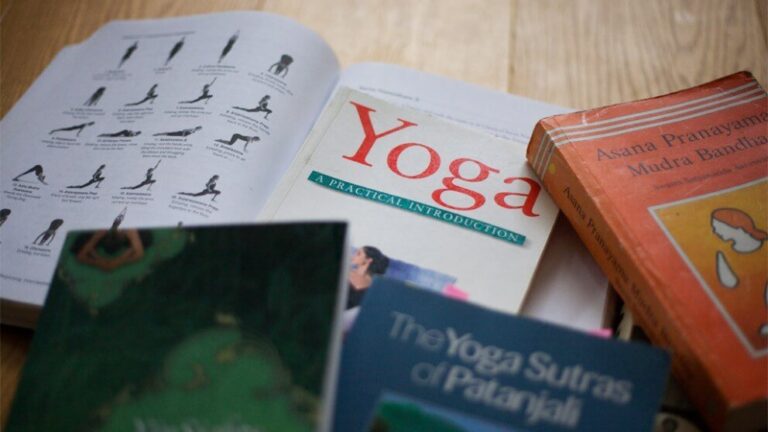Great article from Kirsty Tomlinson from www.ekhartyoga.com defining some common Yoga terms.
If you don’t know the difference between your sacrum and your sternum, mix up your chaturangas with chimichangas* and haven’t a clue what Ujjayi is, this article is for you!
*one is a yoga pose, the other is a fried burrito!!!
If you’re new to yoga (or even if you’re not), you may have heard words in class that you don’t recognise. It might seem like your teacher is speaking in a language you’ve never heard …. in fact, they are. The language of yoga is Sanskrit which is the root of many Indian languages and in fact one of the oldest of all human languages.
If, like me, you’ve had the experience of being instructed to “engage your Mula Bandha”, or to “lift and spread your sit bones” but not having a clue what they are, here is a general glossary of some of the things you might hear in your yoga class (because let’s face it, holding tree pose is challenging enough!)
Let’s start with the most obvious one…
1.Yoga – to ‘yoke’ or ‘bind’ – often interpreted as ‘union’ (the union of breath, body and mind).
2.Asana- literally translates as ‘seat’ – but the more modern interpretation of the word denotes physical postures or poses.
3.Bandha- internal muscular ‘locks’ that, when engaged, support the toning and lifting of strategic areas of the body. The 3 major bandhas are:
Mula Bandha – the pelvic floor muscles
Uddiyana Bandha – the abdominals up to the diaphragm
Jalandhara Bandha – the throat
4.Chakra- meaning ‘wheel’ – energy centres in the body located between the base of the spine and the top of the head.
We have seven – Sanskrit names are in brackets
the root – (muladhara); base of the spine,the sacral (svadhisthana) – lower abdomensolar plexus (manipura) – upper abdomen,heart (anahata) – centre of the chest,throat (vishuddha) – throat area,third eye (ajna) – forehead, between the eyebrows,crown (sahasrara) – the very top of the head
5.Chaturanga- four limbed staff pose or low plank, requires arm, shoulder and core strength.
6.Core- often thought of as the abdominal muscles. However, it’s more accurate to think of it like an apple core, running from the top of your head to the inner arches of your feet.
7.Downward dog (Adho Mukha Svanasana)- one of the most common yoga poses, like an inverted ‘V’ shape.
8.Drishti- focal point of gazing during meditation or yoga practice (useful during balancing poses!)
9.Hatha- known as yoga for the physical body. In Sanskrit, “Ha” represents sun and “tha” represents moon. Hatha is the basic style of yoga that forms the basis for most styles of yoga, often used to describe slower-paced classes with no flow to them.
10. Mantra- a word, sound or phrase repeated either out loud (chanting) or in the mind – said to increase concentration while meditating.
11.Mudra – a hand position / gesture used to aid concentration, focus and connection to yourself during your meditation and asana practice. The most common are Anjali (pressing palms together at the heart) and Jnana (pronounced nyah-nah) (forefinger and thumb touching to form a circle, the other three fingers stretching away)
12.Nadi- the energy channels through which prana or life force flows. Pranayama uses the breath to direct and expand the flow of prana in our energy channels – the nadis.
13.Namaste- roughly meaning ‘the light within me bows to the light within you’ and generally said at the end of a yoga class, bowing the head with palms pressed together at the heart.
14.(A-U-M) – a mantra usually chanted at the beginning and end of yoga classes – a tiny word with a multitude of meanings – said to be the origin of all sounds and the seed of creation. Often quoted as the “universal sound of consciousness”.
15.Patanjali- 2nd / 3rd BCE sage said to have compiled the Yoga Sutras, a guide or ‘instruction manual on how to live in order to advance along a spiritual path towards enlightenment.
16.Prana- life energy; life force.
17Pranayama- breathing exercises which clear the physical and emotional obstacles in our body to free the breath and so the flow of prana – life energy.
18.Sacrum- a triangular-shaped bone in the lower back.
19.Savasana- meaning Corpse pose – relaxation pose typically at the end of a yoga class.
20.Shanti- meaning ‘peace’ – often chanted three times in class.
21.Sit / Sitting bones- part of the pelvis – the two bony protrusions on the underside of the buttocks that are most easily felt when sitting on a hard surface.
22.Sternum- breastbone – long, flat narrow bone that runs vertically down the centre of the chest.
23.Surya Namaskar- Sun salutations – a sequence of asanas. This dynamic yang sequence is a very popular sequence often used to warm up the body at the start of a yoga class.
24.Tail bone- the little bone at the end of your spine. Pointing your tailbone down helps to align the pelvis.
25.Ujjayi- commonly translated as the ‘victorious breath’ or ocean breath because of the sound the breath makes at it enters and leaves the slightly constricted throat.
26.Upanishad- collection of texts of religious and philosophical nature, written in India probably between c. 800 BCE and c. 500 BCE.
27.Vinyasa- movement linked with breath. Postures are strung together in a short or longer flow.
28.Yang yoga- style of yoga that is more rythmic, repetitive and energetic – great for buidling strength and fitness
29.Yin yoga- series of long-held, passive floor poses that target the fascia and connective tissues in the body. We need a combination of Yin and Yang in yoga (as in life!) to keep us balanced and healthy.
www.ekhartyoga.com is an online Yoga studio and both Nichi and joey teach on it as well as many other excellent teachers. Your first month is only 1 euro!! Do Yoga anytime and anywhere with this wonderful resource.

